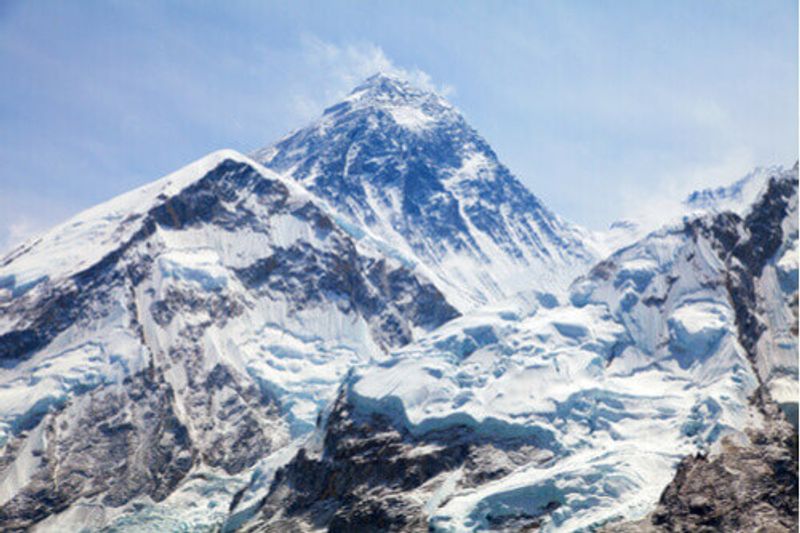The world’s highest peak is also one of the most deadly but has for centuries given rise to myths and legends
Mount Everest stretches 8,848 metres (29,029 feet) into the sky making it the highest mountain on earth. To put that into perspective, most commercial jets fly at between 8,500 m to 10,700 metres (or 28,000 to 35,000 feet).
The mountain borders China’s Tibet and Nepal with the actual border running along its summit. Created due to the crashing of the Indian and Eurasian tectonic plates, Mount Everest grows by about 7 millimetres every year. The summit of the mountain is made from marine limestone meaning that at some point about 450 million years ago it was at the bottom of the sea.
Mount Everest was ‘discovered’ in 1841 by Sir George Everest who was a Surveyor General of India from 1830 to 1843. In 1865 it was named after him as recommended by his predecessor Andrew Waugh, much to Everest’s disapproval. He suggested it should retain one if its native names but Waugh said there were too many local names to pick from and Everest it was. In fact, today, we are pronouncing it wrong, as Everest the man, pronounced his name ‘Eve-rest’ not ‘Ever-est.’
Of course the Brits didn’t discover the mountain, as it has been known of for thousands of years by the locals. It is called Sagarmatha in Nepali, meaning Goddess of the Sky (or forehead of the sky), and Chomolungma in Tibetan, meaning Mother Goddess of the Universe.
A century before the Brits arrived, the Chinese Qing Dynasty had already surveyed the mountain but it wasn’t until 1852 that the peak was confirmed as the world’s highest. After the announcement, the race was on, and in the late 19th and early 20th century, expeditions were launched in a bid to be the first to summit the mountain. In the early 1920s a number of British expeditions were led by the explorer George Mallory and in 1924, Mallory and Andrew Irvine made an attempt from which they never returned. It is still to this day, not known if they managed to make it to the peak as in 1999 his body was found just metres from the top.
The first successful ascent, has instead been credited to New Zealander Hillary Edmund and Nepali Sherpa Tenzing Norgay in 1953. Since then over 5,000 people have managed to set foot at the highest point on earth. The majority of those who have set out to reach the summit however, haven’t succeeded with many turning back. Incredibly 297 people have perished whilst attempting to climb the mountain. Most of those have died in what is known as the Death Zone, which begins at 8,000 feet. The lack of oxygen, means that months of acclimatising are needed, as the average person living at sea level would pass out in just a couple of minutes at such altitudes. Avalanches are the largest cause of death on the mountain (with 2014 and 2015 being terrible years) dozens of mountaineers have lost their lives due to falls or simply getting injured and unable to get back off the mountain. Sadly, there are still about 200 dead bodies on the mountain as it is almost impossible to bring down the dead – some of which are still visible, frozen into the ice.
The conditions at the top of the mountain can see temperatures of minus 60 degrees Celsius and wind speeds of up to 200 mph for most of the year. This leaves just two-week window in May where the Jet Stream changes allowing weather calm enough for a summit attempt.


